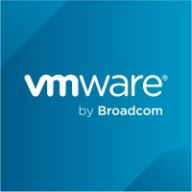

VMware Cloud Director and AWS Trusted Advisor compete in the cloud management and optimization category. VMware Cloud Director appears to have the upper hand in environments heavily relying on VMware due to its strong integration and customer support, while AWS Trusted Advisor is superior for cost optimization and multi-cloud management.
Features: VMware Cloud Director offers customizable automation capabilities, seamless workload migration, and private and hybrid cloud management. AWS Trusted Advisor provides robust optimization tools, comprehensive checks for cost efficiency, and security compliance assistance.
Ease of Deployment and Customer Service: VMware Cloud Director is known for straightforward deployment tailored to VMware ecosystems and offers dedicated support. AWS Trusted Advisor is integrated into the AWS Management Console, providing ease of use for existing AWS customers with strong customer service support.
Pricing and ROI: VMware Cloud Director may involve higher initial setup costs but offers substantial ROI in VMware-centric environments. AWS Trusted Advisor is included with AWS Business or Enterprise Support, making it a cost-effective option with compelling ROI through its optimization recommendations.
| Product | Market Share (%) |
|---|---|
| VMware Cloud Director | 5.4% |
| AWS Trusted Advisor | 1.0% |
| Other | 93.6% |


| Company Size | Count |
|---|---|
| Small Business | 5 |
| Large Enterprise | 3 |
| Company Size | Count |
|---|---|
| Small Business | 24 |
| Midsize Enterprise | 11 |
| Large Enterprise | 36 |
AWS Trusted Advisor is your customized cloud expert! It helps you to observe best practices for the use of AWS by inspecting your AWS environment with an eye toward saving money, improving system performance and reliability, and closing security gaps.
VMware Cloud Director, also known as vCloud Director, is a cloud management tool that offers secure, flexible, and efficient cloud resources to thousands of enterprises and IT teams across the world. The solution serves as one of the leading cloud service-delivery platforms for businesses that want to manage and operate their services effectively. By deploying this solution, companies can benefit from virtualized networking, computing, security, and storage. These benefits can be received in a timely manner, as the infrastructure of the product is operationally ready within minutes and clients do not need to install and configure physical infrastructure.
One of the biggest advantages of vCloud Director is that it allows users to build cloud-ready applications. In several ways, it facilitates the process for developers, including:
vCloud Director Features
This VMware product has various features through which users can virtualize their data and benefit from quality management solutions. Among the popular capabilities of vCloud Director are:
vCloud Director Benefits
VMware vCloud Director offers various benefits to its users. Some of these include:
Reviews from Real Users
Ajit Y., a cloud architect at a computer software company, likes VMware vCloud Director because it is a stable, truly multitenant software and the go-to tool for infrastructure as a service.
Kashif F., a divisional engineer at National Telecom Corporatio, rates vCloud Director highly because the product can be used for infrastructure provisioning without using a platform service.
We monitor all Cloud Management reviews to prevent fraudulent reviews and keep review quality high. We do not post reviews by company employees or direct competitors. We validate each review for authenticity via cross-reference with LinkedIn, and personal follow-up with the reviewer when necessary.